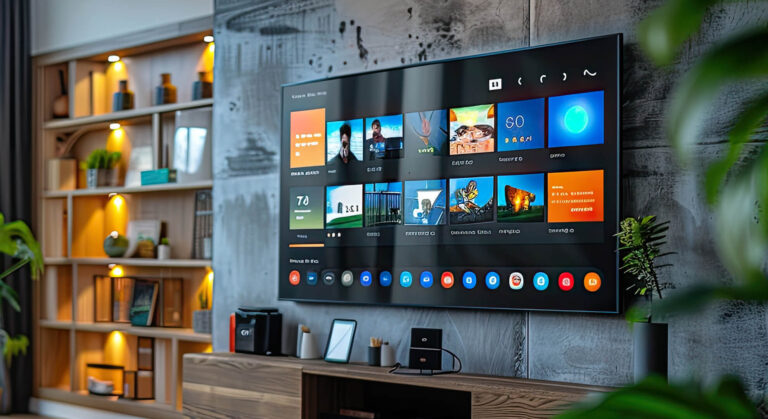This article was originally published on August 5, 2024 and last updated on May 22, 2025.
In recent years, the landscape of live event advertising has undergone a significant transformation. With more viewers choosing streaming platforms over traditional linear TV to consume live sports, daily news, and other events, the advertising industry is pivoting to keep up.
Australians now spend just as much time watching streaming services as free-to-air TV, effectively ending the concept of traditional “prime time,” according to Deloitte’s 2024 Media and Entertainment Consumer Insights report. Surveying over 2,000 people, the report found Australians consume around 44 hours of digital media each week—about six hours a day. On average, they spend 8 hours and 20 minutes weekly on both subscription video on demand (SVOD) and free-to-air TV.
In fact, studies show that ads served during live events boost brand image and deliver messages to audiences more effectively.
Traditionally, inventory for marquee events has been sold through linear buying workflows, such as upfronts. Capitalising on the shift to streaming and opening live event inventory to programmatic is a game-changing opportunity for marketers to capture the attention of highly engaged and attentive viewers without the cost and heavy commitment of upfronts.
With all the streaming growth and ad tech advancements in recent years, what’s preventing us from realising the full potential of programmatic ads in live event streaming?
Challenges in programmatic for live event advertising
- Signals for live event inventory: One of the main challenges in delivering programmatic ads during live events is the lack of signals to distinguish the inventory from other traffic. The livestream attribute within the OpenRTB content object is used to signal that content is being streamed live, but it is insufficient in setting live, real-time event content apart from pre-recorded programs. For example, a live sports game or award show with unscheduled ad breaks has unique traffic patterns and requirements compared to a new TV show episode that a viewer is streaming live, but both would be signaled with the same livestream status in the content object today.
Shoulder content associated with live events, like pre-game shows and red-carpet coverage, is valued differently than other live inventory and should be accurately signaled as well.
These signals are crucial for identifying live event inventory, allowing media buyers to tailor their campaigns effectively and apply different bidding optimisation logic. Improving the OpenRTB specification to standardise new fields is an important starting point. - Infrastructure scalability: The infrastructure required to support programmatic advertising during live events must be capable of handling significant peaks in ad requests. Live events, especially popular ones like sports finals or major political debates, can generate massive spikes in viewership, leading to high concurrency in ad requests. Ensuring programmatic infrastructure can scale to meet these demands without lag or failure is critical for maintaining a smooth viewer experience and maximising ad revenue.
- Fast activation and forecasting: Live events are inherently dynamic and difficult to forecast as unexpected surges in viewership or unplanned ad breaks can occur at any moment. Buyers must be able to launch and adjust campaigns in real time to capitalise on fleeting moments of high engagement. Ad creatives need to be prepared, approved, and ready to activate quickly, or brands risk missing the opportunity to participate in a live event.
- Support for diverse monetisation strategies: Live event streaming requires flexible monetisation strategies to accommodate various media owner and buyer needs. Traditional TV-style share-of-voice (SOV) buying, where buyers secure a percentage of a tuned-in audience, must coexist with highly addressable buys that leverage data for targeted advertising. This dual approach can maximise revenue potential by catering to both broad-reach campaigns and precision-targeted real-time ads.
The path forward: collaborating toward scalable solutions
While there have been successful one-off implementations showcasing different methodologies for live event advertising, the industry needs to make a collective effort to achieve truly scalable solutions in programmatic streaming TV. A few big players are already investing in their proprietary technologies, but we need a collaborative approach across the entire supply chain—from media owners to buyers to ad tech providers—to benefit all stakeholders, including viewers.
The current state of fragmented solutions highlights the need for standardisation and interoperability. Industry-wide standards and best practices can help streamline processes and ensure that different platforms and technologies work seamlessly together. This collaboration will not only improve the efficiency and effectiveness of programmatic advertising, but also foster innovation and growth in this uncharted territory of live streaming.
Leading the charge: ongoing efforts and a call to action
As part of our leadership in IAB Tech Lab’s Ad Break Management Working Group, Index is working with several stakeholders across the programmatic industry to develop the Live Event Ad Playbook (LEAP), a set of proposals designed to standardise and optimise live event ad serving.
Several initiatives are already in motion:
• Improved bidstream signals: The OpenRTB 2.6 specification now supports the content.data.cids[] field, allowing streaming publishers to share structured identifiers without disclosing episode, game, or event titles in plain text. These IDs give publishers control over how they disclose key signals while helping buyers make contextual decisions.
We are co-authoring a proposal to update the OpenRTB 2.6 content object to introduce a way for publishers to indicate whether the content is pre-recorded orlive, and whether it’s delivered as a live stream.
• Enhanced data sharing: The LEAP introduces a near-real-time concurrent streams API to help streaming publishers share periodic live concurrency snapshots with authorised tech partners. Sharing data like total viewer counts, geographic breakdowns, and event-level metadata allows downstream partners to adjust their infrastructure capacity and transaction strategies in sync with actual demand.
• Standardised bid pre-fetching: While it’s common to pre-fetch ads for upcoming live event ad breaks today, approaches vary widely across the ecosystem. This proposal aims to standardise best practices, introduce signals that distinguish between real-time and pre-fetched bid requests, and create mechanisms for feedback and win/loss notifications. These signals help DSPs manage budget pacing and frequency capping during high-concurrency windows and surging queries per second (QPS).
• Streamlined creative compatibility: To address creative readiness, we’re developing a shared process to pre-register ad creatives ahead of a live event. This gives SSPs, ad servers, and SSAI providers time to audit, transcode, and cache creatives in advance, ensuring they’re playback-ready the moment an ad break begins.
Together, these components provide the technical foundation to improve reliability, maximise monetisation, and elevate the live streaming experience. We invite everyone to share their knowledge and perspectives on ad serving in live streaming as the working group develops scenario-specific solutions.
By addressing key hurdles through collaboration and innovation, we as an industry can develop scalable solutions that enhance the live streaming experience for viewers and deliver greater value for both marketers and media owners.
To learn more about programmatic advertising in streaming TV, check out our educational Index Explains video series. If you’d like to get involved in shaping new industry standards for live event advertising, please get in touch with our team.
Back to blog



